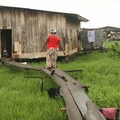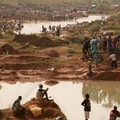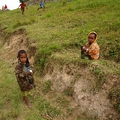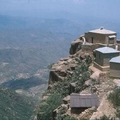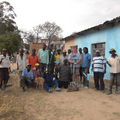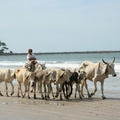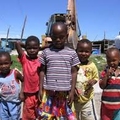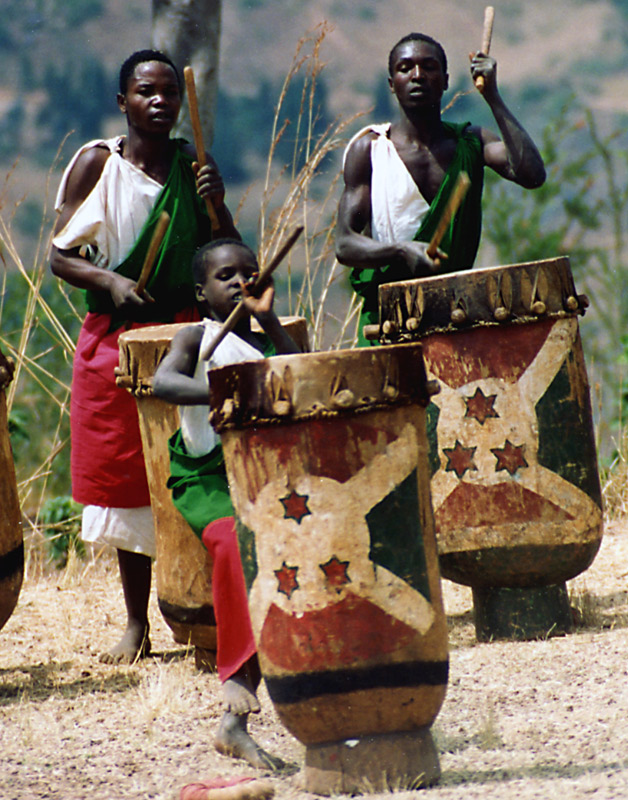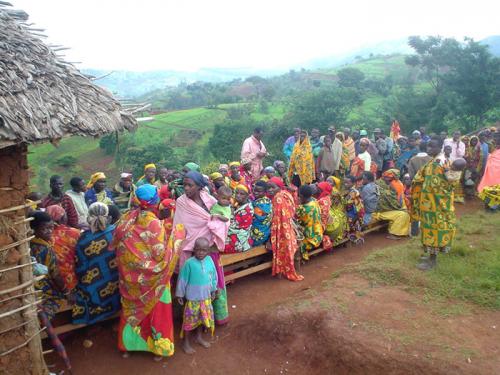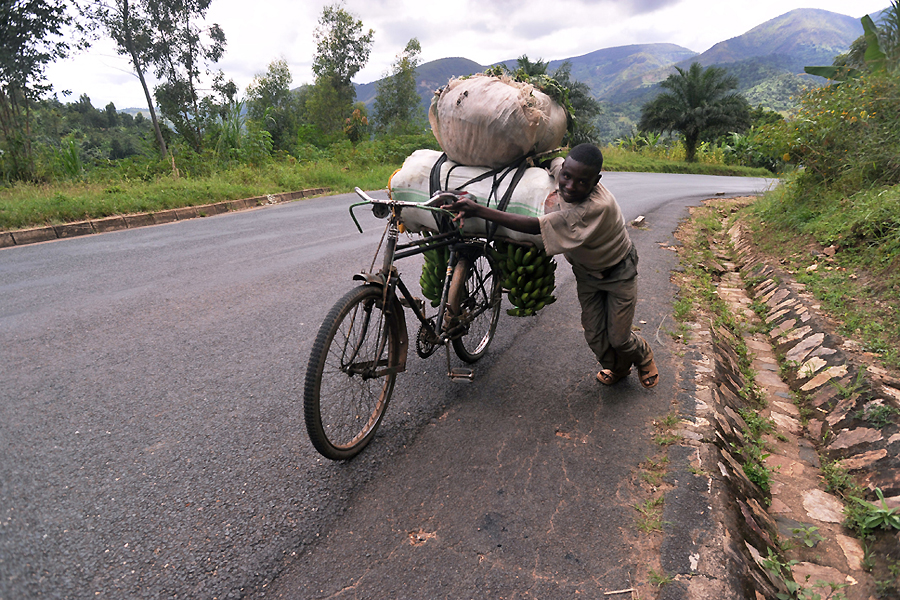Destinations / The Poorest Countries in the World / Burundi
Burundi
Geography
Burundi is a small country in East Africa (the north-east of Lake Tanganyika). The nearest neighbors are Congo, Tanzania, Rwanda. There is no outlet to the sea. The total area of the state is of 27.8 thousand square kilometers. The relief is mostly medium-altitude, occupying a large part of the plateau (from 1400 to 2500 above the sea level). The highest point is Mount Heha (2670 m). The capital is Bujumbura.
Climate
The sub-equatorial climate is characterized by a wet summer. Rainfall during the two seasons lasts from September to November and from February to May. In mountainous areas, the rains come in the hottest months, and, as a rule, immediately evaporate. On the hills of the plateau is usually 1400-1600 mm of rainfall per year, on average the same across the country - 1000 - 1200 mm. The monthly average temperature here is of 15-20, 23-25, in depressions in the valley of the River Ruzizi 25, in the highlands from 22 degrees Celsius. Population . There are about 6.3 million people. Of these, 97% are close to the people of Nigeria, or Rundi (Hutu, Tutsi, Twa pygmies,). The population density is of 249 people per 1 sq. m (one of the highest in Africa). 62% of people are Catholics.
Holidays.
The local entertainment and attractions include national parks Ruzizi, Ruvuvu, Kivira. In these and other nature reserves are held car tours and safaris. Burundi is a poor country, however, it has beautiful nature. There is Kibabi and hot springs, Lake Tanganyika, Kagera waterfall. Of the non-natural objects of interest in the capital Bujumbura is the Parliament and the former colonial administration, as well as the royal palace in Gitega.
Economy - Overview
Burundi is a landlocked, resource-poor country with an underdeveloped manufacturing sector. The economy is predominantly agricultural with more than 90% of the population dependent on subsistence agriculture. Economic growth depends on coffee and tea exports, which account for 90% of foreign exchange earnings. The ability to pay for imports, therefore, rests primarily on weather conditions and international coffee and tea prices. The Tutsi minority, 14% of the population, dominates the government and the coffee trade at the expense of the Hutu majority, 85% of the population. An ethnic-based war that lasted for over a decade resulted in more than 200,000 deaths, forced more than 48,000 refugees into Tanzania, and displaced 140,000 others internally. Only one in two children go to school, and approximately one in 15 adults have HIV / AIDS. Food, medicine, and electricity remain in short supply. Burundi’s GDP grew around 5% annually in 2006-07, before increasing to 6% in 2008.
Political stability and the end of the civil war have improved aid flows and economic activity has increased, but underlying weaknesses - a high poverty rate, poor education rates, a weak legal system, and low administrative capacity - risk undermining planned economic reforms. Burundi will continue to remain heavily dependent on aid from bilateral and multilateral donors; the delay of funds after a corruption scandal cut off bilateral aid in 2007 reduced governments revenues and its ability to pay salaries.
Others The Poorest Countries in the World .
Maps of Burundi
map BurundiOthers from The Poorest Countries in the World
GDP, literacy rate and employment are the main parameters to determine the level of a country's economy.
According to the report of the United Nations, hunger causes the death of about 25,000 people daily.
Unfortunately, more children die than adults.
982 million of the 4.
8 billion people in the developing world live on $ 1 a day.
Another 2.
5 billion people live on less than $ 2 per day.
What factors influence the level of the economy? These are the geography of the country, industrialization, colonialism, education, natural resources, infrastructure, overcrowding, investment, government debts.
Here is a list of the most-most of the world's poorest countries: There are 9 in Asia: Afghanistan Bangladesh Butane East Timor Yemen Cambodia Laos Myanmar Nepal In Africa 33: Angola Burkina Faso Mali Burundi Benin Chad Sudan CAR Democratic Republic of Congo Ethiopia Niger Djibouti Comoros Somalia Equatorial Guinea Togo Tanzania Uganda Eritrea Madagascar Malawi Guinea-Bissau Lesotho Rwanda Mauritania Mozambique Southern Sudan Sao Tome and Principe Zambia Oceania has 5: Vanuatu Samoa Tuvalu Kiribati Solomon Islands The North America only one: Haiti And 2 of the 4 th in the world: Cape Verde Botswana The world's poorest countries belong to their ratings, so it makes sense to select the top 10 most such, the number of GDP.
This list begins with the very poor and can be a little different: Congo Liberia Zimbabwe Solomon Islands Somalia Comoros Guinea CAR Niger Ethiopia It is known by everybody that the economy is developing in different countries in different ways.
The factors that make compiled rating may be noted by the gross domestic products, by the literacy rate and the percentage of the population of working citizens.
Summing these factors in a special way, without any problems, can determine the level of the development of a region.
Actually it was done.
Based on some worldly reports it becomes clear to us that tens of thousands of people die every day directly from hunger.
By the way, more than half of the world's population spends at least 30 rubles per day.
These indicators are mainly related to poor developing countries of the world, because they are very backward and people do not want to work properly.
In some cases this can be attributed to the nature and the lack of minerals.
Congo is a leader of the poorest state from the economy point of view.
There always were constant wars and chaos.
Liberia has serious problems with the export, losing its diamond resources.
It has a large number of debts and bad lives.
Zimbabwe is not much better than others.
There is most inflation and a small amount of money, as a result, unemployment and related phenomena.
In Solomon Islands, then things are a little better.
In this country there are a lot of fish, so it caught almost all the inhabitants of the country.
From fossils, too, all very good.
However, technological progress, or something else does not allow to live normally.
Somalia is the most militant.
Usually people are engaged in agriculture and cattle breeding.
However, there were many pirates who robbed everyone who came across their path.
However, such a laugh did not improve their lives in general.
Disaster occurred in Comoros because of an increase in population.
The result was a lack of jobs and defaults.
People in Guinea are engaged in agriculture and fishing.
This is the only thing by which they can survive.
As an additional problem may be noted viruses.
Summing up our ranking of the world's poorest places, we tried to make you understand their general backwardness.
In these places, residents never shone with mind and they do not understand anything in modern technologies.
The level of literacy suggests that schools are not the main places to get life skills.
What they wanted got it.
Just do not know how to create good living conditions, then let it grow at least something.
The fact that there are rich and poor countries is known to many.
But ordinary citizens do not realize how poor countries are .
.
.
poor .
The fact that living standards in these countries is poor, often referred to international organizations.
Well, try to find out about the top 10 poorest countries in the world, consisting of ten states.


